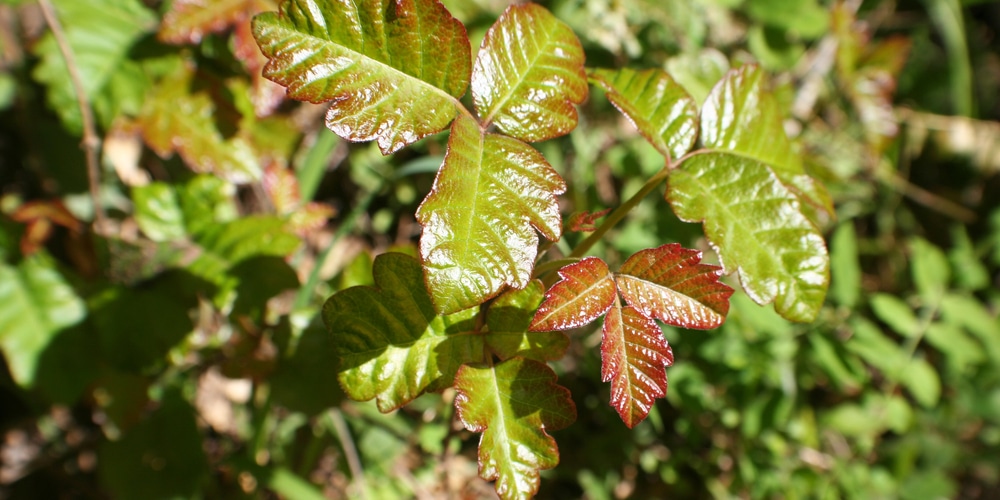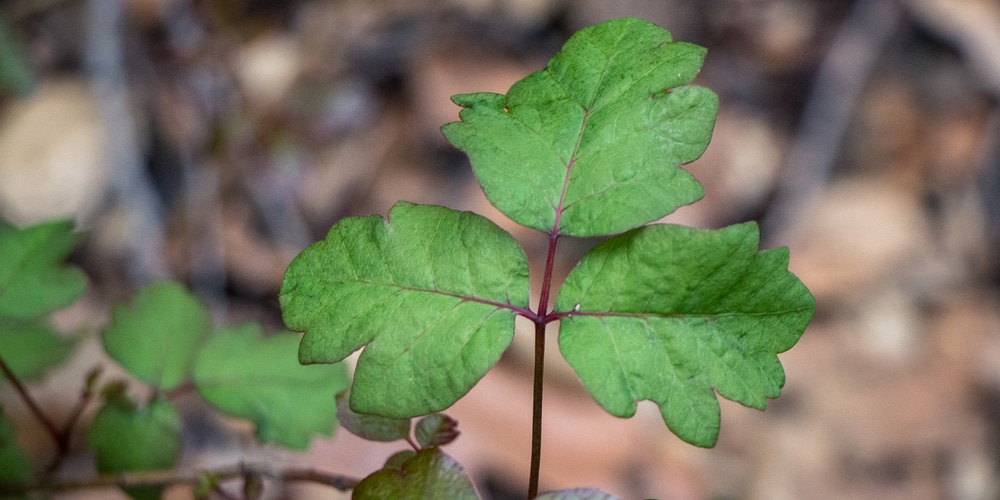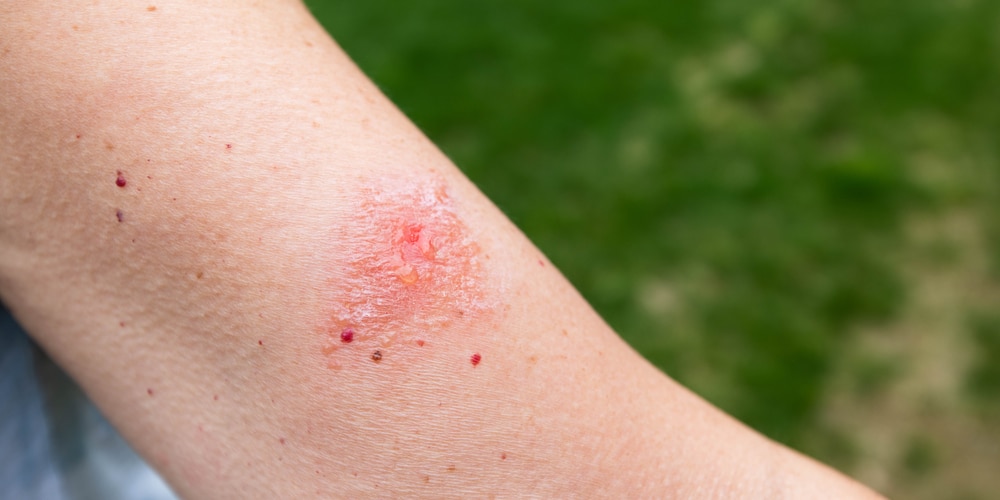Poison oak is a plant found in North America and is known to cause a rash called contact dermatitis. This rash can be extremely itchy and often leads to people seeking medical attention.
Poison oak grows in various habitats, including woodlands, forests, and brushlands; it can also be found in urban areas, such as parks and gardens. The poison oak’s leaves and stems are a valuable food source for several animals, including livestock.
Birds and some forage animals dine on the berries without experiencing any adverse effects.
Poison oak Growth
Poison oak typically blooms in the spring and summer months. The plant produces small white or green flowers that turn into dark berries. Poison oak can propagate through its berries, eaten by birds and other animals.
The animals then spread the plant’s seeds in their droppings. Poison oak can also spread through root systems and stem fragments.
It does have small, non-hairy fruits that ripen in the late summer to early fall. Inside the fruit are tiny seeds with a hard coat that keep them viable for years. After germination, it takes a few days for the plant to develop its first leaves, which are small and have a toothed margin.
At this time, the plant is often mistaken for poison ivy. The young plants mature rapidly, reaching full size within two to three years.
Since the fruits are also food for several animals and birds, the passage of the hard-coated seed through their digestive track supports quicker germination. This reduces the dormancy period and makes it easier for the poison oak to spread.
Where Does the Name ‘Poison’ Come From?
The name “poison” in poison oak comes from the fact that the plant can cause severe allergic reactions in some people. Poison oak is a member of the sumac or cashew family, including other plants that can cause similar reactions.
These plants contain a chemical called urushiol, which is found in the leaves, stems, and berries of poison oak. Urushiol can cause an itchy, blistering rash in people who come into contact with it. The reaction is similar to that caused by poison ivy and poison sumac.
Does it Grow in Georgia?
Poison oak grows almost anywhere in the United States. However, it’s more commonly found in the west. You can find it from British Columbia to Baja California.
Poison oak is found mainly in the western regions of the states, but it’s also in California, where it’s widespread. Poison oak can also frequently be found in urban landscapes, parks, gardens, and recreational areas.
So, does it grow in Georgia? Most likely, yes. You might not find it in those areas specifically, but since it can thrive almost anywhere in the US, its chances in Georgia are high.
The most common places to find it in Georgia are those inland trails with bushy surroundings or the dark, wet forests around the beach. Since Georgia has plenty of coastland, rangelands, brushlands, and oak woodlands, It’s safe to say you might one day come across poison oak Georgia.
How to Identify it in GA
It is crucial you understand how to identify the plant if you want to avoid the predicament of coming into contact with the poison oak Georgia. Poison oak is a woody perennial plant that can grow to be either a shrub or a climbing vine.
In those open areas, poison oak typically grows to be 1-6 feet in height as a shrub. However, if poison oak is growing in a shaded area, it has the potential to grow up to 75 feet high as a climbing vine. This is because the plant uses its aerial roots to support itself on other vegetation or objects.
A general rule of thumb for identifying poison ivy is “leaves of three, let them be” because poison oak typically has leaves in three groups. The leaflet is typically 1-4 inches long and has toothed or lobed edges. The leaves’ surface may be smooth, glossy, thick, soft, or hairy, particularly on the bottom.
The poison oak leaves are alternate, meaning they grow out to the left and then to the right along the stem. The leaves and stems of these shrubs are smooth, without thorns or spines.
The plant produces small, white-green flowers at the joint where the leaves meet the stem. These flowers then turn into whitish-green, round fruit that forms late summer and can persist into fall and winter.
What Happens If You Come Into Contact With Poison Oak
The poison oak has an oil called urushiol. Urushiol is an irritant that can cause an allergic reaction when it touches your skin, eyes, or mucous membranes. Most people will develop a rash within 12-24 hours of coming into contact with the plant.
The rash usually starts as small bumps that turn into blisters. It can be very itchy and last for several weeks. In severe cases, the rash can cover a large area of your body and lead to an infection.
If you come into contact with poison oak, it is vital to wash the affected area with soap and water as soon as possible. This will help remove the urushiol from your skin and prevent further exposure. You can also use a commercial product that contains Tecnu to remove the oil from your skin.
Several over-the-counter treatments can help relieve the itching and inflammation if you develop a rash, such as calamine lotion, hydrocortisone cream, or oral antihistamines. You may need a prescription-strength corticosteroid cream or oral prednisone in severe cases.
How to Avoid Contact With Poison Oak
The best way to avoid a reaction is to avoid coming into contact with poison oak. When hiking, camping, or working in areas where poison oak might be present, wear long sleeves and pants to protect your skin. Keep away from regions where the plant is growing, and do not touch or move any dead plants.
If you are allergic to poison oak, carry an epinephrine injector with you in case of a severe reaction. If you must work in an area where poison oak is present, take precautions to avoid coming into contact with the plant.
Poison Oak Georgia: Conclusion
Poison oak is a plant found in many parts of the United States, including Georgia. The plant is mainly found in wooded areas but can also be found in open fields and roadsides.
You can identify it by its leaves, which usually come in groups of three. The plant can cause a severe allergic reaction if you come into contact with it, so it is vital to take precautions to avoid exposure.
If you do come into contact with the plant, be sure to wash the affected area with soap and water as soon as possible.
Related Article: Poison Sumac vs Staghorn Sumac


